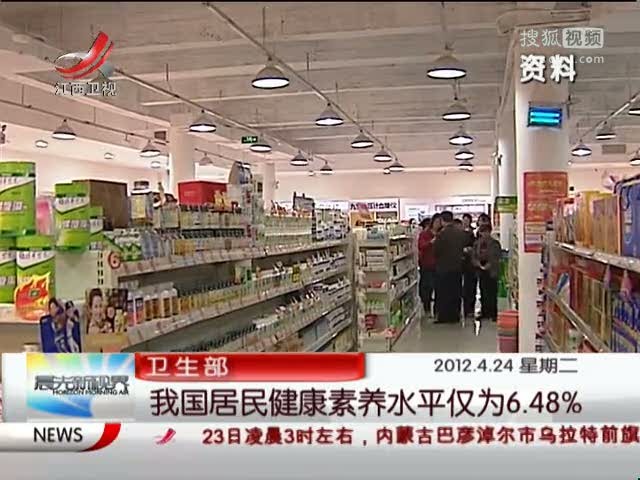在近几多月的新 冠疫情下,医疗行业逆势增长,危机之下仍孕育着新的产业机会。其中, 一个叫“脉搏血氧仪’的小型医疗设备的需求激增至非常高的水平。
In COVID-9 epidemic recently, the medical industry has grown against economic depression. Among new opportunities in the industry are bred under current crisis, the demand of a small medical device called pulse oximeter has been spiked to an extraordinary degree.
脉搏血氧仪是什么?
What is the value of Pulse Oximeter?
脉搏血氧仪可以测量血液中氧气的饱和度。新 冠患者普遍存在“血氧含量降低”的现象,因此血氧含量可作为一大生命体征,来反映呼吸、循环功能的一个重要生理参数。
A pulse oximeter can estimate the saturation of oxygen in your blood. "Drop in blood oxygen saturation" is common phenomenon in COVID patients, so it can be used as a vital sign to reflect an important physiological parameter of respiratory and circulatory functions.
在常规健康监测中,血氧传感器能够筛查贫血患者、监测外科患者的失血情况,指导临床输血管理等。脉搏传感器可用于心率监测、中医脉象诊断等。
In routine health monitoring, Oximeter can screen patients with anemia, monitor patient’s blood loss in surgery, and guide clinical blood transfusion management. Pulse sensor can be used for heart rate monitoring, pulse diagnosis of traditional Chinese medicine, etc.

脉搏血氧仪的工作原理
Principle of Pulse Oximeter
脉搏血氧仪是利用两种不同波长的光吸收率, 用来计算血液的氧合作用, 并将信号与脉冲的相关性, 作为区分血液的中静脉血和动脉血的信号。 众所周知,脉搏跳动过程中,血管中血量会有变化。且对于不同的光波长,还原血红蛋白(Hb)、氧合血红蛋白(HbO2)的吸收系数有差异。如下图所示,在850nm、940nm不可见光波段中,两种血红蛋白对光的吸收差异明显。
The pulse oximeter uses the light absorption rate of two different wavelengths to calculate the oxygenation of the blood, and the correlation of the signal to the pulse is used to separate the signal of the arterial blood from venous and capillary blood. As well known, the blood volume in the blood vessels will change during the pulse. And for different light wavelengths, the absorption coefficients of reduced hemoglobin (Hb) and oxyhemoglobin (HbO2) are different. As shown in the figure below, in the 850nm and 940nm invisible light bands, the difference in light absorption between the two hemoglobins is obvious.

因此,脉搏血氧仪利用还原血红蛋白(Hb)和氧合血红蛋白(HbO2)对红外光吸收系数的差别,由朗伯比尔定律进行血氧饱和度的测量,将血管在脉搏跳动过程中透光率的变化转换为信号输出。
Therefore, the Pulse Oximeter uses the difference between the infrared absorption coefficient of reduced hemoglobin (Hb) and oxyhemoglobin (HbO2) to measure the blood oxygen saturation by Beer–Lambert law, and the light transmittance of the blood vessel during the pulse beat. The change is converted to a signal output.

反射式血氧传感器原理

透射式血氧传感器原理

脉搏传感器原理
(English version no need the above pictures)
新亮光子产品方案:
Brightlaser product solution:
新亮光子致力于VCSEL产品研发及生产,可提供850/940nmVCSEL光源,助力新 冠抗疫。同时新亮光子也提供PIN PD作为接收配, 波长多样850nm/940nm等), 功率选型丰富,可作为血氧和脉搏传感器的核心发射光源。
Brightlaser is committed to the development and production of VCSELs, provides 850/940nm VCSEL light sources to help fighting COVID-19. Brightlaser also provides PIN PD as a receiving pair. Various wavelengths (850nm/940nm, etc.), different power options, used as the core light emission source of Pulse Oximeter.
对于所有这些血氧测定应用,相对LED ,VCSEL光源测量更加精准,穿透皮肤深度更深, VCSEL提供了更窄的光谱线宽发射;波长随温度的变化更具优势,比LED小于超过40倍;功耗降低多达一个数量级。由于考虑家居患者的看护便利, 及监测遥测医学患者,无线传感器日趋普及,功耗的优势则显得尤为重要。
For all of these oximetry applications, compare to LED, VCSEL light source is more accurate for measurement, penetrates deeper into the skin. VCSELs provide the benefits of a narrower spectral linewidth emission, a 4X smaller shift in wavelength with temperature, and as much as an order of magnitude reduction in power consumption. The latter consideration is particularly relevant for a shift to wireless sensors for convenience of the patient or home monitoring of patients with telemetric medicine.

产品应用方案:
Product application plan
驱动电路驱动VCSEL发射红外光 → 还原血红蛋白(Hb)、氧合血红蛋白(HbO2)吸收不同强度的红外光 → 剩余的红外光发射回或投射到信号接收器 → 处理器处理电信号 → 转换计算为血氧指标
The drive circuit drives the VCSEL to emit infrared light → reduced hemoglobin (Hb) and oxyhemoglobin (HbO2) absorb infrared light of different intensities → the remaining infrared light is emitted back or projected to the signal receiver → the processor processes the electrical signal → converts it into blood Oxygen index

驱动电路: PCB Driver
时序控制: Timing Control
单片机: Single chip microcomputer
信号处理: Signal processing
信号接收: Signal reception














